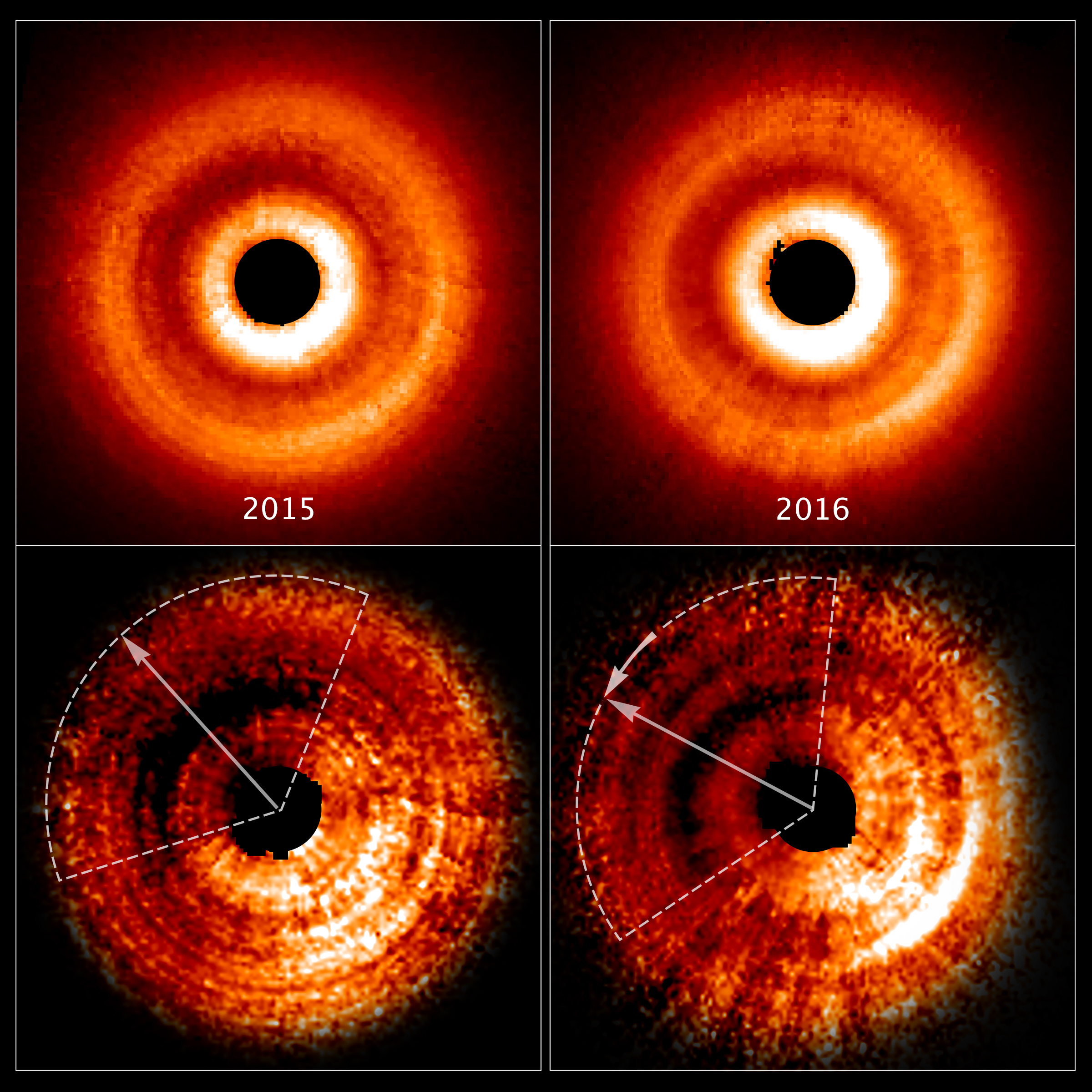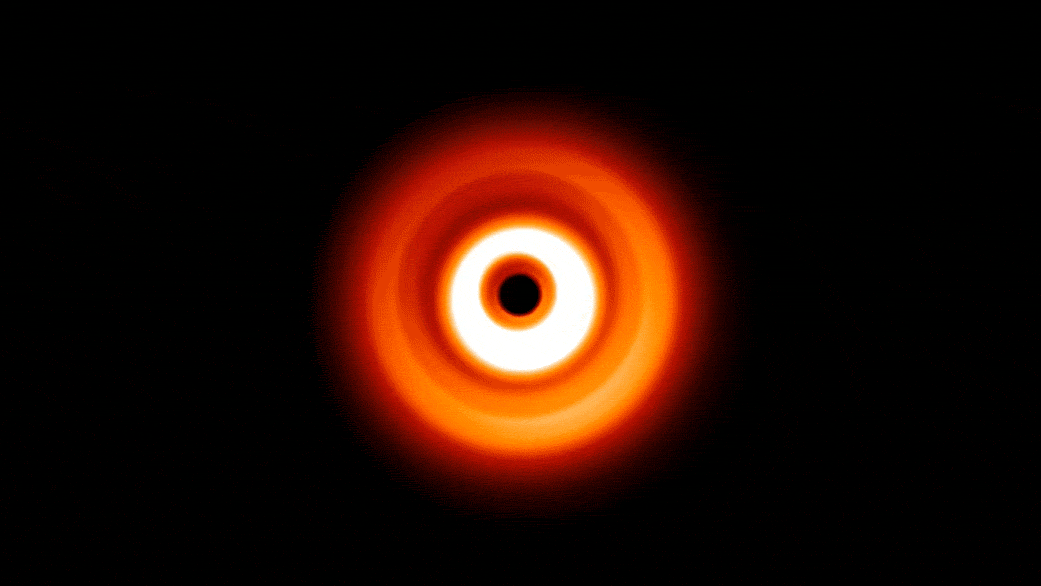Odd Shadow Around Young Star May Be Sign of Newborn Planet

Astronomers might have just found a new way to discover alien planets.
A bizarre shadow cast on the disk of dust and gas surrounding the young star TW Hydrae is likely evidence of an unseen exoplanet orbiting within the disk, astronomers report in a new study.
The research team noticed the shadow after analyzing 18 years' worth of observations of TW Hydrae, which is about 8 million years old and lies 192 light-years from Earth, in the constellation Hydra. The images, taken by NASA's Hubble Space Telescope, showed that the shadow rotates around the 41-billion-mile-wide (66 billion kilometers) disk once every 16 years. [The Hubble Space Telescope: A 25th Anniversary Photo Celebration]
"This is the very first disk where we have so many images over such a long period of time, therefore allowing us to see this interesting effect," study lead author John Debes, of the Space Telescope Science Institute in Baltimore, said in a statement. "That gives us hope that this shadow phenomenon may be fairly common in young stellar systems."
An unseen exoplanet is the best explanation for the shadow, Debes and his colleagues said. If they're right, the alien world itself isn't casting the shadow; rather, the planet's gravity has twisted and tilted the inner portion of the dust-and-gas disk, blocking starlight headed toward the outer reaches.
The team's calculations suggest that the planet lies about 100 million miles (160 million km) from TW Hydrae — about the distance from Earth to the sun. That's way too close to the star for Hubble or any other telescope now in operation to photograph it directly. (Planets that orbit so tightly are drowned out by their parent stars' overwhelming glare.)
The putative planet must be about five times more massive than Jupiter to sculpt the inner disk in this manner, the researchers added.
Breaking space news, the latest updates on rocket launches, skywatching events and more!
The results — which Debes presented Saturday (Jan. 7) at the 229th meeting of the American Astronomical Society in Grapevine, Texas — map out a promising new way to hunt for infant planets in the inner portions of the disks surrounding young stars, study team members said.
"What is surprising is that we can learn something about an unseen part of the disk by studying the disk's outer region and by measuring the motion, location and behavior of a shadow," Debes said. "This study shows us that even these large disks, whose inner regions are unobservable, are still dynamic, or changing in detectable ways which we didn't imagine."
Follow Mike Wall on Twitter @michaeldwall and Google+. Follow us @Spacedotcom, Facebook or Google+. Originally published on Space.com.

Michael Wall is a Senior Space Writer with Space.com and joined the team in 2010. He primarily covers exoplanets, spaceflight and military space, but has been known to dabble in the space art beat. His book about the search for alien life, "Out There," was published on Nov. 13, 2018. Before becoming a science writer, Michael worked as a herpetologist and wildlife biologist. He has a Ph.D. in evolutionary biology from the University of Sydney, Australia, a bachelor's degree from the University of Arizona, and a graduate certificate in science writing from the University of California, Santa Cruz. To find out what his latest project is, you can follow Michael on Twitter.


